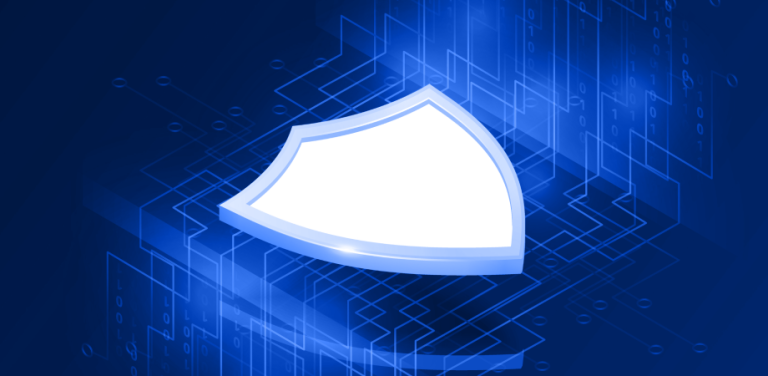Thai Food: Discover 10 Must-Try Street Dishes from Thailand
15 January 2024

Pad Thai
Pad Thai is one of Thailand’s most famous dishes. Indeed, it is the dish many Thai restaurants around the world are judged by. Whilst many versions of the dish are made around the world, a truly authentic Pad Thai dish will have a fishy smell and taste to it.
Primary Ingredients
Rice Noodles. Flat rice noodles are commonly used in Pad Thai, which allows them to soften before being stir-fried.
Protein. Traditionally, Pad Thai includes tofu as the main protein source, but there are many other options, with shrimp and chicken being the most common.
Egg. Pad Thai is prepared by stir-frying noodles, the protein source, and an egg together in a wok or frying pan.
Additional Ingredients
Bean sprouts are added a little later in the cooking process, which create a real crunch. Chopped peanuts are added to the top of the dish before serving. A typical Pad Thai includes a mix of tamarind paste, fish sauce, palm sugar and chilli. When done right, this combines for an incredible mixture of flavours. Lime wedges, coriander, and chopped green onions are typically used in pad Thai, adding yet more flavour to the finished dish. Pad Thai offers a mix of sweet, sour, salty, and spicy flavours. Whilst its versatility allows for different ingredients to suit each person, ultimately the best places to eat Pad Thai are on the streets of Thailand.
Khao Pad
Khao Pad – or simply Thai Fried Rice – is extremely popular in Thailand. It can include many different kinds of ingredients, and is therefore very versatile.
Primary Ingredients
Rice. Jasmine rice is most commonly used in Thailand, though other types can be used.
Meat. Basically any type of meat works well in Khao Pad, with chicken, shrimp, pork and beef being some of the most common ones.
Eggs. Sometimes scrambled into the dish.
Additional Ingredients
Other common ingredients include carrots, peas, onions, garlic, and bell peppers. Various sauces can be added, such as fish, oyster or soy, while sugar and chilli paste sometimes provide extra flavour. All the selected ingredients are stir-fried together in a wok or frying pan. The meat is usually cooked first, and then the vegetables, eggs, and rice. Khao Pad is often served as a standalone dish, and is extremely popular due to its versatility. You’ll find many variations of the dish around Thailand.
Moo Ping
Moo Ping is a quintessential Thai street food: pork skewers in a delicious marinade. These are some of the best grilled pork skewers you are likely to find anywhere on the planet.
Primary Ingredients
Chunks of pork. Usually shoulder or neck.
Coconut Milk. This helps tenderise the pork.
Fish Sauce and soy sauce provides saltiness and umami flavour and adds depth to the marinade.
Garlic allows for a savoury taste, while palm or brown sugar add sweetness and helps to balance all the flavours.
Coriander Roots provide an earthly flavour.
Additional Ingredients
Turmeric or Curry Powder is sometimes added for colour and additional flavour. After being marinated, the pork is threaded onto skewers and then grilled over an open flame. When prepared expertly, the pork is caramelised on the outside, leaving a slightly charred crust and a tender, juicy inside. Known for its delicious smoky flavour, Moo Ping is usually served as part of a larger meal.
Tom Yum Goong
Tom Yum Goong – usually referred to as Tom Yum – is a Thai soup renowned for its spicy and tangy flavours. It’s typically made with shrimp (Goong) which serves as the main protein, although the dish can also be made with other meats and even fish.
Primary Ingredients
Shrimp. Tom Yum usually features shrimp as the primary protein, although other options like chicken, fish, or seafood can also be used.
Additional Ingredients
Lemongrass and kaffir lime leaves, add citrusy aroma and fragrance to the soup. Chillies are used to add spice, with the amount depending on personal preference. Fish Sauce is sometimes used to add saltiness and depth of flavour. Lime Juice is used to provide a tangy taste. Different types of mushrooms are often added to the dish, while sliced or quartered tomatoes add sweetness and texture. Fresh coriander leaves are used as a garnish.
To prepare the dish, all the ingredients are simmered together in a broth flavoured with lemongrass, galangal, and kaffir lime leaves, which creates a sour and spicy dish. Tom Yum is usually served as a starter or one part of a larger meal in Thai cuisine. It is one of the most popular and recognised Thai dishes worldwide.
Som Tam
Made primarily from shredded, unripe papaya, Som Tam is most famous for the way it mixes sweet, sour, salty and spicy tastes, which all combine for a very vibrant flavour.
Primary Ingredients
Papaya. The unripe or green papaya is shredded into strips.
Additional Ingredients
Chillies are a standard ingredient, and the amount is adjusted depending on preference and spice tolerance. Minced garlic is added to enhance the savoury flavours. Fish Sauce allows for that distinct Thai flavour. Soy sauce and lime juice are often used to add even more flavour. Sliced cherry tomatoes are often used to add juiciness, while peanuts and green beans are sometimes used to add a real bite to the dish.
The selected ingredients are usually pounded together using a mortar and pestle. This helps bring all the flavours together. You can check out the Hungry in Thailand blog for more tips and tricks on how to best prepare various Thai dishes.
When cooked well, Som Tam is tangy and spicy, with a very refreshing taste. Sometimes served on its own, Som Tam is usually served as a side dish that accompanies other Thai specialities.
Kai Jeow
Kai Jeow is commonly known as Thai omelette or Thai-style fried omelette, and is a simple Thai dish usually served as part of a larger meal or spread.
Primary Ingredients
Beaten eggs. These are the only consistent primary ingredients in Kai Jeow.
Additional Ingredients
Tomatoes, chopped onions, green onions and different types of minced meat are all options to be added to the egg. Some variations may include chopped onions, tomatoes, green onions, or minced meat (such as pork or shrimp) mixed into the eggs. To prepare Kai Jeow the eggs are fried in hot oil, usually until golden and crispy. The middle of the egg remains fluffy and tender. Typically cooked in a wok or frying pan, the omelette doesn’t have a standard shape or size. It is then usually served with a side of jasmine rice and chilli sauce or dipping sauce.
Despite the range of options, cooking a Thai omelette can be difficult to get just right. Sometimes it’s best to leave it to the experts. It can be found in many Thai street food stalls, so if you’re looking for an Australian-style dish in Thailand, this is a very good option.
Sai Oua
This spicy pork sausage, also known as Northern Thai Sausage, has a famous blend of herbs and spices. It is particularly popular in Northern Thai regions like Chiang Mai.
Primary Ingredients
Ground pork. This provides the base of the sausage.
All kinds of herbs and spices. Lemongrass, kaffir lime leaves, coriander, shallots, garlic, galangal, turmeric, red chilli pepper and coriander or cumin seeds are the most common. The herbs and spices are all finely chopped or pounded into a paste and mixed into the ground pork.
Additional Ingredients
Coconut Milk is sometimes used to create richness and moisture to the sausage. Some seasonings like fish sauce and soy sauce can be added to enhance the flavour and add saltiness and sweetness.
Bringing it all together, the sausage mixture is stuffed into natural casings or banana leaves and then grilled over charcoal or an open flame, which creates a beautiful smoky flavour. They can also be pan-fried or baked, allowing for a slightly different flavour. Are you hungry yet?
Khao Soi
Khao Soi is an extremely popular noodle dish, which originated from Northern Thailand. Its aromatic curry broth, as well as its noodles and garnishes, combine to make a very tasty dish. In addition, it can also be prepared in just 15 minutes!
Primary Ingredients
Curry paste. This provides the base for Khao Soi, and is made from turmeric, ginger, garlic, shallot, coriander seeds, curry powder, and dried chilli pepper.
After the curry is fried, coconut milk is used to simmer the paste, which adds a creaminess to the broth.
Chicken, beef, and tofu are the most common forms of protein in Khao Soi.
Both boiled egg noodles and crispy egg noodles, with the crispy ones usually used to add texture as a topping.
Additional Ingredients
A number of garnishes can be served with Khao Soi, such as coriander, lime wedges, and mustard greens. Known for its complex and rich flavours, Khao Soi is a wonderful mix of sweet, savoury, and spicy tastes. Often served with chilli paste or chilli peppers, personal preference dictates the heat level.
Despite originating in the North, Khao Soi is now an extremely popular dish throughout Thailand and the world. Nonetheless, if you’re ever in Chiang Mai, there are a couple of dishes you should try! Now we move on to Thai desserts.
Khanom Bueang
Khanom Bueang, or Thai Crispy Pancake, is a traditional Thai dessert, with a touch of both sweet and savoury.
Primary Ingredients
Rice flour and mung bean flour. These typically make up the batter for the pancakes.
The savoury filling is usually made up of sweetened whipped cream, shredded coconut and on occasion, chopped shrimp or scallions.
The sweet filling usually includes a sweetened mixture of egg yolks, sugar and sweetened fruits.
Whichever filling used is spread onto one side of the pancake, before it is folded into a taco-like shape. The crispy outer layer and soft inside create a glorious contrast, which likely explains why these little delights are so popular.
Mango Sticky Rice
Simple, but magnificent. Also known as Khao Niew Mamuang, Mango Sticky Rice is popular both in Thailand and around the world.
Primary Ingredients
Sticky rice. This is soaked and then steamed until it becomes tender and sticky.
Mangoes. These have to be fresh and ripe, and are usually sliced.
Coconut milk sauce. This is created with coconut milk, sugar, and a pinch of salt, before being heated to create a creamy sauce.
Mango sticky rice is served by placing a portion of the sticky rice onto a plate or into a bowl, topped with slices of ripe mango, before the coconut milk sauce is drizzled over the top.
Conclusion
You now know a little more about street food in Thailand, and we’re sure you’re a little hungrier now than when you started the blog.
You can transfer money to Thailand with e-Pocket today. Learn more about Thailand by reading our Thai beaches or Bangkok Beyond the Chaos blogs.




